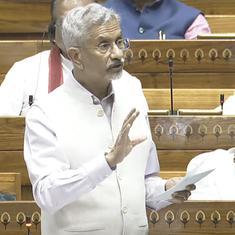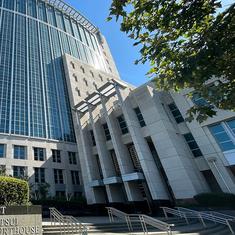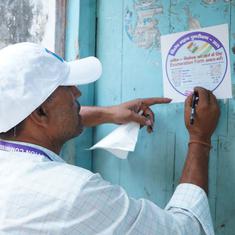Wholesale inflation rises to 2.61% in May, highest in 14 months
This was the seventh consecutive month that wholesale price inflation grew on a year-on-year basis.

India’s Wholesale Price Index-based inflation rose to a 14-month high of 2.61% in May, according to data released by the Ministry of Commerce and Industry on Friday. This was up from a 13-month high of 1.26% in April.
“Positive rate of inflation in May is primarily due to increase in prices of food articles, manufacture of food products, crude petroleum and natural gas, mineral oils, other manufacturing etc,” the commerce and industry ministry said.
The rate of food price inflation alone rose from 5.52% in April to 7.40% in May, the most out of any major commodity.
May was the seventh straight month that wholesale price inflation grew on a year-on-year basis after declining for seven straight months before that, reported The Hindu. On a month-on-month basis, the Wholesale Price Index was up 0.2% in May, down from a 10-month high of 0.8% in April, the newspaper reported.
The Centre’s data shows particularly high inflation in the cost of vegetables, from 23.6% in April to 32.42% in May. Onion inflation was at 58.05%, potato at 64.05% and pulses at 21.95% in May.
Meanwhile, India’s Consumer Price Index-based inflation, or retail inflation, fell from 4.83% in April to 4.75% in May, its lowest mark in a year. The rate of inflation was higher for rural consumers at 5.3% in May while urban consumers faced inflation of about 4.15%.
However, the rate of food price rise remained steady at 8.7%. This makes May the fourth straight month in which food inflation remained at over 8.5%. The price of food items rose by 0.7% for rural consumers and 0.9% for urban consumers in May.
The Centre has mandated the Reserve Bank of India to keep Consumer Price-based Inflation at 4%, with a margin of 2% above and below that mark.
The central bank’s Monetary Policy Committee on June 7 decided to keep the repo rate unchanged at 6.5% for the eighth consecutive time.
The repo rate is the interest rate at which the central bank lends money to commercial banks. The Monetary Policy Committee decides on changes to it every two months.
Central banks usually increase key lending rates amid high inflation in economies. Higher key lending rates translate into high interest on loans disbursed by commercial banks. This, in turn, keeps a check on discretionary spending by consumers which is expected to help curb prices rise due to high inflation. However, a higher repo rate also means that the borrowers pay more interest on their loans.









